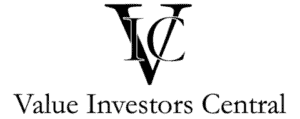Introduction
Disney, a name synonymous with enchantment and childhood memories, has become a global entertainment powerhouse. From animated classics to theme parks and streaming services, Disney has successfully captured the hearts of audiences around the world. Behind the enchanting experiences lies a meticulously crafted business model that has contributed to Disney’s enduring success. In this blog post, we will delve into the intricacies of the Disney business model and explore how the company has mastered the art of creating magic.
- Content Creation and Intellectual Property
At the heart of the Disney business model is its exceptional ability to create compelling content and develop cherished intellectual property. Disney’s portfolio includes iconic characters, beloved stories, and memorable franchises, such as Mickey Mouse, Cinderella, Star Wars, Marvel, and Pixar. By nurturing and expanding these valuable assets, Disney establishes deep emotional connections with its audience and creates a vast universe of stories and experiences that can be leveraged across multiple platforms.
- Integrated Entertainment Ecosystem
Disney’s business model is built upon an integrated entertainment ecosystem that spans various channels and platforms. The company seamlessly weaves its content and characters into movies, television shows, theme parks, merchandise, consumer products, and digital platforms. This integrated approach allows Disney to maximize the reach and impact of its intellectual property while creating numerous touchpoints for consumers to engage with its brand. It also enables cross-promotion and synergies across different divisions, amplifying the overall success of each element within the ecosystem.
- Theme Parks and Experiential Entertainment
Disney’s theme parks, such as Disneyland and Walt Disney World, play a significant role in its business model. These immersive and enchanting destinations provide visitors with a unique and magical experience. From thrilling rides to live shows and character meet-and-greets, Disney parks create memories that last a lifetime. The parks act as a powerful marketing tool, driving brand loyalty, fostering emotional connections, and generating substantial revenue through ticket sales, merchandise, and food and beverage offerings.
- Merchandising and Consumer Products
Disney’s business model extends beyond content creation and theme parks to include a robust merchandising and consumer products division. The company licenses its intellectual property to various manufacturers and retailers, generating revenue from the sale of toys, apparel, home goods, and more. The popularity of Disney characters and franchises allows the company to leverage its brand equity and maintain a strong presence in the retail market. Additionally, the integration of merchandise with content releases and theme park experiences further amplifies the consumer demand for Disney products.
- Streaming and Direct-to-Consumer Strategy
Recognizing the evolving landscape of entertainment consumption, Disney has embraced streaming services as a vital component of its business model. The launch of Disney+ in 2019 marked a significant milestone, providing a direct-to-consumer platform to showcase its vast library of content. By leveraging its intellectual property, Disney has successfully attracted millions of subscribers to its streaming service. Furthermore, Disney’s direct-to-consumer strategy extends to other platforms, such as Hulu and ESPN+, allowing the company to cater to different audience segments and capture a larger market share.
- Global Expansion and Local Adaptation
Disney’s business model incorporates strategic global expansion, ensuring its presence in key international markets. The company acquires or partners with local entities to navigate cultural nuances and establish a strong foothold in foreign territories. For example, Disney’s collaboration with Shanghai Shendi Group led to the opening of Shanghai Disneyland, tailored to the preferences and tastes of Chinese consumers. This global expansion strategy enables Disney to tap into new markets, capitalize on international growth opportunities, and diversify its revenue streams.
Conclusion
The Disney business model is a remarkable tapestry that weaves together content creation, intellectual property, integrated entertainment ecosystems, theme parks, merchandising, streaming, and global expansion. Disney’s ability to create captivating content and nurture beloved intellectual property has allowed it to build an empire that transcends generations. By leveraging its integrated entertainment ecosystem, Disney maximizes the reach and impact of its brand, creating multiple avenues for consumers to engage with its magic.
The theme parks act as physical manifestations of the Disney brand, offering immersive and enchanting experiences that captivate visitors of all ages. These parks serve as powerful marketing tools, fostering emotional connections and driving brand loyalty. Moreover, Disney’s merchandising and consumer products division capitalizes on the popularity of its characters and franchises, extending the Disney experience into the homes and lives of fans worldwide.
Recognizing the shift in consumer behavior, Disney has embraced streaming services as a crucial component of its business model. Through platforms like Disney+, the company directly connects with consumers, providing them with a vast library of content at their fingertips. This direct-to-consumer strategy allows Disney to adapt to changing market dynamics, cater to evolving consumer preferences, and stay at the forefront of the digital entertainment revolution.
Disney’s global expansion strategy is a testament to its ambition and vision. By partnering with local entities and adapting its offerings to different cultural contexts, Disney ensures its presence in international markets. This approach not only broadens the company’s reach but also enables it to create tailored experiences that resonate with diverse audiences.
In conclusion, the Disney business model is a masterclass in creating magic and enchantment. Through its unparalleled content creation, integrated entertainment ecosystem, theme parks, merchandising, streaming services, and global expansion, Disney has captured the hearts of millions and built an empire that stands as a beacon of imagination and storytelling. As Disney continues to evolve and innovate, its commitment to creating exceptional experiences and nurturing its beloved characters and franchises ensures that the magic lives on for generations to come.







